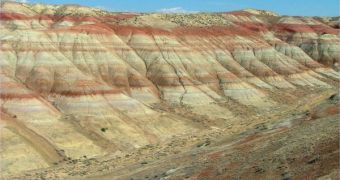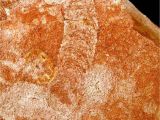A new scientific study has determined that soil-dwelling creatures that inhabited the world some 55 million years ago evolved to be a lot smaller than they had been before, largely due to the increased global temperatures during the Paleocene-Eocene Thermal Maximum (PETM). This is among the first studies to investigate such a correlation, and experts say that the influence the environment had on the soil dwellers goes way beyond estimates. The creatures responded to heat by decreasing their body sizes by about 50 percent, within a very short time frame, the US National Science Foundation (NSF) reports.
“The discovery that up to 50 percent of the body size reduction during the PETM was not just restricted to mammals, but also affected soil-dwelling organisms, has broad implications that may be very significant to understanding modern climate change and its impending effect on life,” NSF Division of Earth Sciences Program Director H. Richard Lane explains. The DES was the main funder for the new investigation, which was conducted by University of Kansas geologist Stephen Hasiotis, Kansas Geological Survey scientist Jon Smith, and University of Colorado expert Mary Kraus.
The research, which is detailed in the October 5 advanced online issue of the respected journal Proceedings of the National Academy of Sciences (PNAS), is among the first to showcase shrinking tendencies by as much as 30 to 46 percent of the body size in creatures other than land mammals. Historically, the latter also exhibit a tendency to shrink when exposed to higher temperatures. From an evolutionary standpoint, this makes very much sense – a smaller body means less effort in thermo-regulating, and also a smaller area that is being heated by the Sun.
“In our initial hypothesis, we thought that there would be no response to climate change, that the animals would be protected because they're underground. We also proposed that there would be minimal and protracted change or some sort of a delayed response. Instead, we find that they did experience the same kind of change as vertebrates living during the same period,” Hasiotis explains. The investigation included the ancient ancestors of creatures such as ants, cicadas, dung beetles, earthworms and crayfish, the scientists report.
“The PETM is seen as a good analog for modern climate change because it's occurring at roughly the same speed and magnitude. The take-home lesson is that there can be cascading effects that ripple through an ecosystem when you change just one aspect. Modern climate change can have many effects that aren't going to be as immediately visible as sea-level change. We could be changing soil conditions over vast portions of the world and affecting the soil organisms themselves – and that will impact our own agriculture,” Smith says.

 14 DAY TRIAL //
14 DAY TRIAL // 
